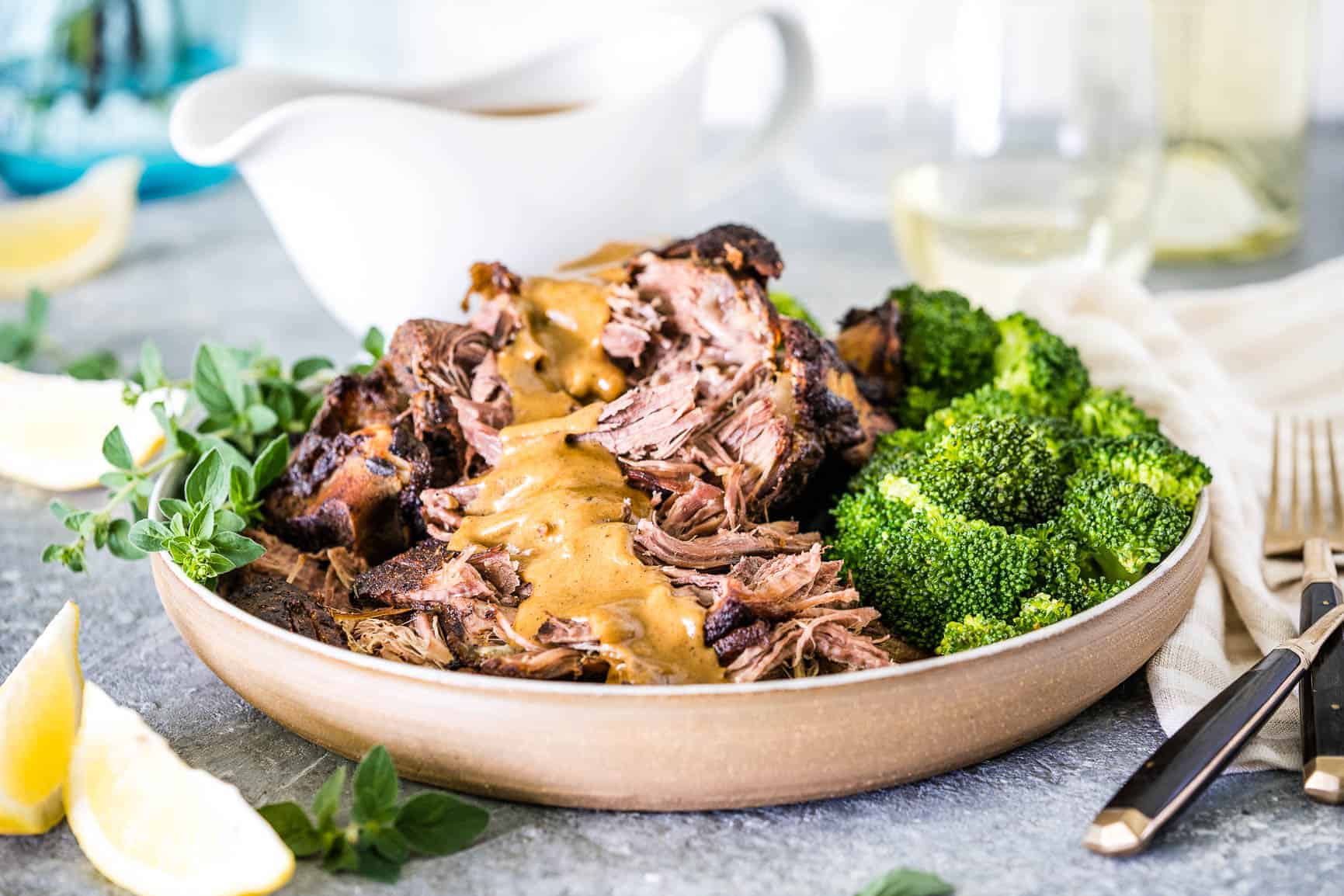Embark on a culinary adventure with our delectable Slow Roast Leg of Lamb Recipe, where succulent lamb meets the gentle embrace of time and aromatic herbs. This dish promises an explosion of flavors, leaving you yearning for more with every tender bite.
Prepare to tantalize your taste buds and impress your loved ones with this extraordinary creation.
As we delve into the intricacies of this recipe, we’ll uncover the secrets to selecting the perfect cut of lamb, marinating it to perfection, and roasting it to achieve unparalleled tenderness. Whether you’re a seasoned chef or a novice cook, our detailed instructions and helpful tips will guide you effortlessly through each step.
Ingredients
To prepare a delectable slow roast leg of lamb, you’ll require a combination of aromatic herbs, zesty spices, and succulent meat.
Here’s a detailed list of ingredients:
Leg of Lamb
- 1 leg of lamb (5-6 pounds), bone-in
Seasonings
- 2 tablespoons olive oil
- 1 tablespoon dried rosemary
- 1 tablespoon dried thyme
- 1 teaspoon dried oregano
- 1 teaspoon salt
- 1/2 teaspoon black pepper
Substitutions and Variations
For a bolder flavor, substitute dried herbs with fresh ones, using approximately three times the amount.
If desired, enhance the taste with a blend of your preferred spices, such as cumin, coriander, or paprika.
Preparation
Before roasting, the leg of lamb requires careful preparation to ensure maximum flavor and tenderness.Begin by trimming any excess fat from the surface of the lamb. This will prevent the meat from becoming greasy during roasting. Season the lamb generously with salt and pepper, ensuring that the seasonings penetrate deeply into the meat.
For an enhanced flavor, consider using a flavorful spice blend or herb rub.To further enhance the lamb’s tenderness, consider marinating it overnight in a flavorful liquid. This can be a simple marinade made with olive oil, herbs, and spices, or a more complex marinade that includes acidic ingredients like lemon juice or vinegar.
Marinating allows the flavors to penetrate the meat, resulting in a more succulent and flavorful roast.
Roasting
The slow roasting process is crucial in achieving tender and flavorful lamb. Several methods can be employed, each with its advantages and optimal conditions.
Temperature and Cooking Time
The ideal temperature and cooking time vary depending on the roasting method. Here are the recommended ranges:
- Conventional Oven: 160-180°C (325-350°F) for 3-4 hours per kilogram
- Slow Cooker: Low setting for 8-12 hours
- Sous Vide: 60-65°C (140-149°F) for 24-48 hours
Monitoring and Even Cooking
Monitoring the internal temperature of the lamb ensures doneness and prevents overcooking. Use a meat thermometer inserted into the thickest part of the leg, avoiding bones.
For even cooking, rotate the lamb occasionally during roasting. Cover the bone with foil to prevent burning. If using a roasting rack, place the lamb on top to promote air circulation and prevent excess moisture.
Additional Information

To store leftover lamb, allow it to cool completely before wrapping it tightly in plastic wrap or aluminum foil. Refrigerate for up to 3 days, or freeze for up to 3 months.
To reheat lamb, preheat oven to 350°F (175°C). Place lamb in a baking dish and cover with foil. Bake for 20-30 minutes, or until heated through.
Nutritional Information and Health Benefits
Lamb is a nutritious meat that is high in protein, iron, and zinc. It is also a good source of vitamins B12, B6, and niacin.
Lamb has been shown to have several health benefits, including:
- Improved immune function
- Reduced risk of anemia
- Increased muscle mass
- Improved brain function
Using Leftover Lamb
Leftover lamb can be used in a variety of dishes, including:
- Shepherd’s pie
- Lamb curry
- Lamb tacos
- Lamb soup
Outcome Summary

As you savor the last morsels of your slow-roasted leg of lamb, let the symphony of flavors linger on your palate. This culinary masterpiece is not merely a meal; it’s an experience that will evoke fond memories and leave you craving for more.
Experiment with different marinades, herbs, and accompaniments to create your own unique signature dish. Whether it’s a cozy family gathering or an elegant dinner party, this Slow Roast Leg of Lamb Recipe will undoubtedly steal the show.
FAQs
What is the ideal roasting temperature for a slow-roasted leg of lamb?
For optimal tenderness and juiciness, roast the leg of lamb at a low temperature of 250-275°F (120-135°C).
How can I ensure even cooking throughout the leg of lamb?
Use a meat thermometer to monitor the internal temperature. Insert the thermometer into the thickest part of the lamb, ensuring it doesn’t touch any bones. Roast until the desired internal temperature is reached.
What are some suggested accompaniments to complement a slow-roasted leg of lamb?
Consider serving your slow-roasted leg of lamb with roasted vegetables, such as carrots, parsnips, and potatoes. A flavorful mint sauce or a rich red wine jus can also enhance the dish.
How should I store and reheat leftover slow-roasted leg of lamb?
Store leftover lamb in an airtight container in the refrigerator for up to 3 days. To reheat, wrap the lamb in aluminum foil and place it in a preheated oven at 300°F (150°C) until warmed through.
